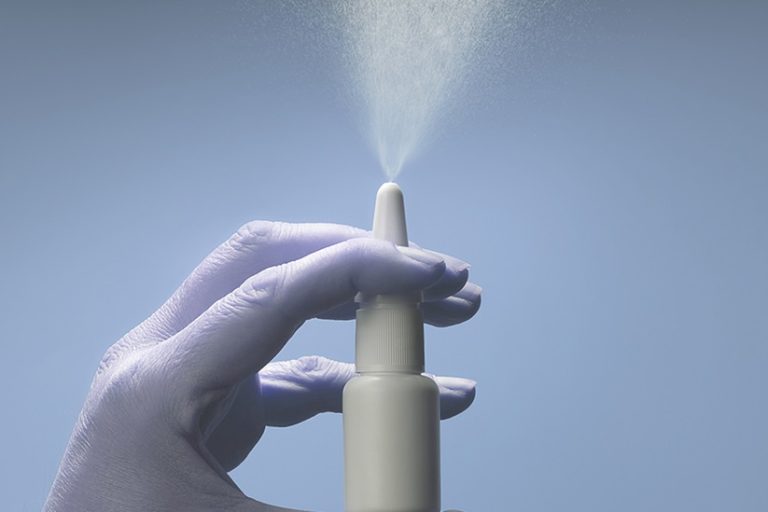The Roots of the Crisis: A Historical Overview
The crisis at Camp Lejeune began to unfold as early as the 1950s, when water sources at the military base became contaminated with hazardous chemicals. Over the decades, the base’s personnel and their families consumed and bathed in water that was laced with a toxic cocktail of industrial solvents, leading to a myriad of serious health issues.
- The primary sources of contamination were two on-base water treatment facilities, Tarawa Terrace and Hadnot Point.
- These facilities were found to be contaminated with volatile organic compounds (VOCs), including trichloroethylene (TCE), perchloroethylene (PCE), benzene, and vinyl chloride.
The contamination was not officially acknowledged until the 1980s, and it took even longer for the full extent of the environmental and health disaster to come to light. The water scandal at Camp Lejeune is now recognized as one of the worst cases of water contamination in U.S. history, with an estimated 750,000 to 1 million individuals potentially exposed to the tainted water over a period of 34 years.
Toxic Exposure: The Chemicals Involved
The water contamination at Camp Lejeune was a result of various chemicals leaching into the groundwater, which was then used as the base’s water supply. Over the decades, the primary contaminants identified were volatile organic compounds (VOCs), including trichloroethylene (TCE), perchloroethylene (PCE), benzene, and vinyl chloride.
- Trichloroethylene (TCE): Used as a metal degreaser, TCE is a clear liquid with a sweet odor. It is known to be carcinogenic to humans and has been linked to health issues such as kidney cancer, non-Hodgkin lymphoma, and liver problems.
- Perchloroethylene (PCE): Commonly used in dry cleaning, PCE exposure can affect the central nervous system and may lead to conditions like bladder cancer and multiple myeloma.
- Benzene: This colorless or light yellow liquid is used in the manufacture of plastics, resins, and synthetic fibers. Benzene exposure is associated with a range of health effects, including leukemia and other blood disorders.
- Vinyl Chloride: Primarily used to make PVC, exposure to vinyl chloride can result in liver damage, including hepatic angiosarcoma, a rare form of liver cancer.
The extent of the contamination and the prolonged exposure period significantly increased the risk of developing serious health conditions for those living or working at the Camp Lejeune Marine Corps Base. The affected populations included Marines, their families, and civilian employees, with the water systems being contaminated from 1953 to 1987. This tragic episode has led to legal options and VA benefits for those impacted by the toxic exposure.
The Scale of Impact: Affected Populations and Time Frame
The water contamination at Camp Lejeune has cast a long shadow over multiple generations of Marines, their families, and civilian employees. The crisis unfolded over decades, with the most significant exposure period identified between the 1950s and 1980s. During this time, an estimated one million individuals may have been exposed to the harmful chemicals present in the water supply.
- The primary affected population includes active-duty Marines stationed at the base, many of whom lived there with their families.
- Civilian employees working at Camp Lejeune also faced exposure, as did visitors and contractors who spent time on the base.
- The repercussions of this exposure have been intergenerational, with health impacts reported in children born to those who lived or worked at the base during the contamination period.
The full extent of the impact is difficult to quantify, as health effects from exposure to the contaminants can take years to manifest. The tragedy at Camp Lejeune is a stark reminder of the importance of environmental vigilance and the need for robust health monitoring systems for military personnel and their dependents.
The Psychological Impact on Marines and Their Families
Bearing the Burden: Emotional Responses to the Scandal
The emotional toll of the Camp Lejeune water scandal on Marines and their families is profound and multifaceted. The revelation of long-term toxic exposure has led to a range of psychological responses, from shock and disbelief to anger and profound grief.
- Shock and Disbelief: Initially, many could not fathom that the water they trusted was tainted, leading to a sense of betrayal by the institution they served.
- Anger: As the reality set in, frustration and anger emerged, directed at those responsible for the oversight and the perceived lack of transparency.
- Grief: The loss of health, and in some cases, the loss of loved ones, has resulted in deep mourning within the community.
The struggle to come to terms with the health implications and the uncertainty about the future continues to weigh heavily on those affected. The emotional burden is compounded by the challenges of navigating the legal and healthcare systems in search of recognition and support.
Long-Term Mental Health Consequences
The water contamination scandal at Camp Lejeune has left a lasting imprint on the mental health of many Marines and their families. The trauma of learning that one’s health or the health of loved ones may have been compromised due to toxic exposure has led to a range of long-term psychological issues.
- Chronic stress and anxiety are common among those affected, as they grapple with the uncertainty of potential health repercussions.
- Depression has been reported at higher rates in this population, often linked to the distress of dealing with chronic illnesses or the loss of fellow Marines.
- Post-traumatic stress disorder (PTSD) is also prevalent, particularly among those who have experienced the loss of a child or spouse due to illnesses related to the contamination.
Support groups and mental health services have become vital for many survivors, providing a space to share experiences and seek solace among peers. However, the need for more comprehensive mental health care and recognition of the full scope of the emotional toll remains a pressing issue.
Support Systems and Coping Mechanisms
In the wake of the Camp Lejeune water contamination scandal, marines and their families have sought solace and support through various channels. The emotional toll of the crisis necessitated the development of robust support systems to help those affected cope with the long-lasting effects of toxic exposure.
- Peer Support Groups: Many have found strength in peer support groups, where they can share experiences and feelings with others who understand their plight. These groups provide a safe space for open dialogue and mutual support.
- Counseling Services: Professional counseling services have been instrumental in addressing the psychological trauma. Therapists specializing in environmental disasters and military life have offered tailored support to help individuals and families navigate their emotional landscapes.
- Online Communities: The digital age has enabled the creation of online communities that offer 24/7 support. These platforms allow for the exchange of information, emotional support, and advocacy efforts, connecting those affected regardless of their physical location.
- Military and VA Resources: The military and the Department of Veterans Affairs have implemented programs aimed at assisting those impacted by the scandal. These include healthcare services, mental health initiatives, and financial assistance programs designed to alleviate some of the burdens faced by the victims.
The establishment of these coping mechanisms has been a critical component in the healing process for many. As the community continues to grapple with the fallout of the scandal, these support systems stand as pillars of hope and resilience.
The Fight for Justice and Recognition
Legal Battles: The Road to Compensation
The quest for justice for the victims of the Camp Lejeune water contamination has been a protracted and complex legal struggle. Over the years, numerous lawsuits have been filed against the federal government, seeking compensation for the health issues attributed to the toxic water exposure.
Key milestones in the legal journey include:
- The initial filing of claims by affected individuals and families.
- The rejection of many claims under the Feres doctrine, which precludes service members from suing the government for injuries deemed incidental to military service.
- The passing of the Camp Lejeune Families Act of 2012, which provided healthcare benefits but not compensation for those affected.
- The ongoing push for broader legislation that would allow for direct compensation and overcome the limitations imposed by the Feres doctrine.
Despite the legal hurdles, the determination of the Marines, their families, and their advocates has kept the fight alive. The legal battles have not only sought financial redress but also aimed to hold the government accountable and ensure such a tragedy is never repeated.
Advocacy and Awareness: Voices from the Front Lines
The fight for justice at Camp Lejeune has been amplified by the voices of those directly affected by the water contamination scandal. Marines, their families, and civilian employees have become vocal advocates, demanding accountability and change. Their stories, shared through various media outlets and public forums, have raised public consciousness about the environmental and health issues military communities may face.
Key figures have emerged within the advocacy movement, leading campaigns and organizing events to keep the conversation alive. These individuals and groups have been instrumental in:
- Coordinating community meetings to share information and support
- Engaging with lawmakers to push for policy reforms
- Partnering with environmental and health organizations to amplify their message
The collective efforts of these frontline advocates have not only provided a support network for those suffering but have also played a crucial role in the legislative victories that have been achieved. Their relentless pursuit of justice serves as a beacon of hope for current and future generations of military personnel and their families.
Policy Changes and Preventative Measures
In the wake of the Camp Lejeune water scandal, significant policy changes and preventative measures have been implemented to ensure such a tragedy is never repeated. These include:
- Enhanced Environmental Oversight: Military bases now undergo rigorous environmental assessments to detect any potential hazards early on.
- Strict Water Quality Standards: The adoption of stricter water quality standards aims to protect against harmful contaminants.
- Transparent Reporting Systems: A commitment to transparency ensures that any issues are reported promptly to the affected communities.
- Health Monitoring Programs: Long-term health monitoring programs have been established for those potentially exposed to toxic substances.
These reforms reflect a broader shift towards accountability and proactive health management within military institutions. As part of this commitment, the Comprehensive Environmental Response, Compensation, and Liability Act (CERCLA) has been a pivotal legal framework, empowering Camp Lejeune survivors to seek damages for illnesses linked to water contamination. Legal counsel can assist in filing claims for compensation under the Camp Lejeune Justice Act (CJLA). For those affected, resources are available, including legal support to navigate the complexities of such claims. For instance, a call to 516-932-0400 offers a free consultation for those seeking guidance.
The Role of the Military in Addressing the Aftermath
Institutional Accountability and Responsibility
The Camp Lejeune water scandal has thrust the military’s role in safeguarding the health of its service members into the spotlight. The demand for institutional accountability and responsibility is a clarion call from affected Marines and their families, who seek not only recognition of the past wrongs but also a commitment to systemic change.
Key elements of accountability include:
- Transparent reporting of environmental hazards
- Rigorous monitoring and compliance with safety standards
- Swift action to mitigate risks and prevent future incidents
The military has been tasked with the monumental challenge of restoring trust. This involves a thorough review and overhaul of existing policies and procedures to ensure that the health and well-being of all service members are prioritized. It also requires a cultural shift within the institution, promoting an environment where safety concerns are taken seriously and addressed promptly. The path to rebuilding confidence is long, but it is a necessary journey for the military to make amends and protect its ranks.
Healthcare Initiatives for Veterans and Families
In the wake of the Camp Lejeune water contamination scandal, the military has taken significant steps to address the healthcare needs of veterans and their families. Recognizing the long-term health effects caused by exposure to toxic chemicals, a range of healthcare initiatives have been implemented to provide support and treatment for those affected.
- Comprehensive Health Screenings: Regular health screenings are now available to identify and address potential illnesses related to toxic exposure.
- Specialized Treatment Programs: Medical facilities have developed specialized programs to treat conditions commonly associated with chemical exposure, such as cancer and reproductive issues.
- Mental Health Services: Understanding the psychological toll, counseling and mental health services have been expanded to help veterans and family members cope with the trauma.
- Outreach and Education: Efforts have been made to inform affected individuals about available healthcare options and the importance of early detection and treatment.
These initiatives represent a commitment to the well-being of those who have served and their loved ones, ensuring they receive the care and attention they deserve. The military’s proactive approach aims to not only provide immediate relief but also to prevent future health crises among its ranks.
Educational Programs and Resources
In the wake of the Camp Lejeune water scandal, the military has recognized the necessity of educating its personnel and their families about environmental hazards and health risks associated with military life. A variety of educational programs and resources have been developed to increase awareness and promote safety.
Key initiatives include:
- Awareness Campaigns: These campaigns are designed to inform service members and their families about potential environmental risks on military bases and the importance of early detection of health issues.
- Health and Safety Workshops: Workshops provide practical information on how to navigate healthcare concerns and advocate for proper medical attention when exposed to hazardous substances.
- Online Resources: The military has created online portals that offer access to a wealth of information regarding health risks, including detailed reports on past incidents and current safety measures in place.
These educational efforts are part of a broader strategy to foster a culture of transparency and proactive health management within the military community. By equipping marines and their families with knowledge and resources, the military aims to mitigate the risk of future tragedies and empower individuals to take charge of their health and well-being.
Healing and Hope: Moving Beyond the Tragedy
Community Resilience and Recovery Efforts
In the wake of the Camp Lejeune water scandal, the affected communities have demonstrated remarkable resilience. Grassroots organizations have emerged, spearheaded by veterans and family members, to provide mutual support and advocate for those impacted by the contamination. These groups have been instrumental in fostering a sense of solidarity and shared purpose among survivors.
Key recovery efforts include:
- Establishing support networks that offer emotional and practical assistance.
- Organizing community events to raise awareness and promote healing.
- Collaborating with environmental and health experts to monitor ongoing risks and ensure safe living conditions.
Despite the challenges, these communities have shown an unwavering commitment to rebuilding and healing. The collective action taken by the residents not only underscores their tenacity but also serves as a beacon of hope for other communities facing similar adversities.
Memorials and Remembrance: Honoring the Affected
In the shadow of the Camp Lejeune water scandal, memorials and acts of remembrance serve as poignant tributes to those who suffered. Communities have come together to erect monuments and hold ceremonies that not only commemorate the victims but also offer a space for collective healing and reflection. These gestures of remembrance are vital in acknowledging the pain endured by countless Marines and their families.
The establishment of annual observances and the dedication of physical memorials at Camp Lejeune and beyond are instrumental in keeping the memory of the affected alive. They also play a crucial role in educating the public about the consequences of the contamination and the importance of vigilance in environmental safety. It is through these acts of honor that the legacy of the victims continues to influence positive change and awareness.
Amidst these efforts, it is essential to remain vigilant against exploitation. The Camp Lejeune Justice Act allows individuals, including Veterans, to file claims with the Department of the Navy. However, it is important to be aware of fraudulent schemes that may target those seeking justice. The community’s commitment to integrity in the fight for recognition and compensation is as steadfast as its dedication to remembrance.
The Path Forward: Lessons Learned and Future Outlook
The Camp Lejeune water scandal has left an indelible mark on the Marine community, but it has also paved the way for critical lessons and changes. As the affected individuals and their families look to the future, several key takeaways have emerged:
- Vigilance and Transparency: There is a consensus on the need for rigorous environmental monitoring and transparent reporting systems to prevent similar tragedies.
- Policy Reform: The incident has catalyzed a push for stronger regulations and oversight of military facilities to safeguard the health of service members and their dependents.
- Healthcare Access: Ensuring that veterans and their families have access to comprehensive healthcare services, including mental health support, is paramount.
- Community Engagement: Active involvement of the community in decision-making processes has been recognized as essential for fostering trust and resilience.
Looking ahead, the military and governmental agencies are tasked with the responsibility of not only rectifying past oversights but also setting a precedent for proactive measures. The establishment of memorials and remembrance events serves as a constant reminder of the past, while educational initiatives aim to inform and empower future generations. The path forward is one of healing, learning, and unwavering commitment to the well-being of those who serve and their loved ones.










